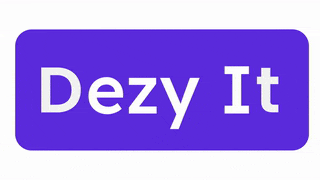How docs help develop medical technology that's speeding up electronic prior authorization
- Indranil Roy
- Jun 20
- 4 min read
The prior authorization process has long been a headache for doctors and patients alike. It often causes delays in care and adds a lot of extra work for medical staff. Recently, new rules from the Centers for Medicare & Medicaid Services (CMS) are pushing for big changes, especially with electronic prior authorization. This shift aims to make things smoother and faster for everyone involved.
The Journey to Better Healthcare Technology
Dr. Viet Nguyen, a Chief Standards Implementation Officer for HL7 International, has a unique background that helps him tackle these complex issues. He started his career as an internal medicine and pediatrics specialist before moving into health informatics. This means he understands both the medical side of things and the technical side. His journey began during his residency when he saw how physician order entry systems worked. This sparked his interest in how technology could make healthcare better. He then pursued a fellowship in informatics, a field he’s been working in for over two decades.
His clinical experience is a big plus because it helps him see how technology can really help doctors. He knows firsthand the problems doctors face with prior authorizations. This understanding is key to developing solutions that actually work in a busy medical setting.
Understanding HL7 and FHIR
To really get how electronic prior authorization is changing, it helps to know about HL7 and FHIR.
HL7 (Health Level 7) is an organization that creates standards for exchanging healthcare information. Think of them as the rule-makers for how different computer systems in healthcare talk to each other. They make sure that when one system sends patient data to another, it’s understood correctly.
FHIR (Fast Healthcare Interoperability Resources) is one of HL7’s newest and most modern standards. It’s been around for about 10 years and is designed to make it easier and faster to share healthcare data. FHIR uses modern web technologies, similar to what you might use every day for things like getting directions or checking social media. This makes it much more flexible and user-friendly than older standards.
The Old Way vs. The New Way of Prior Authorization
Let’s look at how prior authorization used to work and how FHIR is changing it:
The Old Way
Uncertainty about Coverage: Doctors often didn’t know if a service was covered or needed prior authorization until after they ordered it.
Manual Forms: Staff would have to figure out if prior authorization was needed, then doctors would often have to fill out long, paper forms, sometimes after hours.
Delayed Care: If more tests were needed for the authorization, patients would have to come back, delaying their care.
Portal Hopping: Staff had to log into many different insurance company portals to submit forms and check the status, which was time-consuming and inefficient.
Information Gaps: It was hard to know exactly what information was needed, leading to back-and-forth communication.
The New Way with FHIR
FHIR and the Da Vinci Project (an initiative that uses FHIR to improve data exchange) are changing this by addressing three main areas:
Coverage Requirements Discovery: While a doctor is with a patient and ordering a service, the system can instantly check if prior authorization is needed. This means the doctor can tell the patient right away what to expect.
Automated Information Gathering: If prior authorization is needed, the system can show the doctor exactly what information the payer requires. It can even pull standardized data (like blood pressure, lab results, or medical history) directly from the patient’s electronic health record (EHR). This reduces the need for manual data entry and ensures all necessary information is included.
Electronic Submission and Status Updates: The prior authorization request can be submitted electronically using FHIR. Doctors and staff no longer have to visit multiple portals to check the status; the system can provide updates automatically. This saves a lot of time and reduces administrative burden.
Benefits for Everyone
This new electronic process is a win-win:
For Clinicians: It significantly reduces the time spent on administrative tasks, allowing doctors to focus more on patient care. It also cuts down on “pajama time”—the extra hours doctors spend on paperwork after work.
For Patients: It speeds up the approval process, meaning patients get the care they need faster. It also reduces the frustration of delays and extra appointments.
For Healthcare Systems: It streamlines workflows, making the entire process more efficient and less prone to errors.
The Role of Doctors in Technology Development
Doctors play a big part in making these technological advancements work. HL7 actively encourages clinicians to get involved in developing these standards. Their real-world experience is vital for creating systems that are practical and effective. By sharing their insights on workflows and data needs, doctors help ensure that new technologies truly meet the needs of patients and providers.
This shift towards electronic prior authorization, driven by CMS rules and the work of organizations like HL7, is a big step forward. It shows how technology, when developed with input from those on the front lines of care, can make healthcare simpler and more patient-focused.

